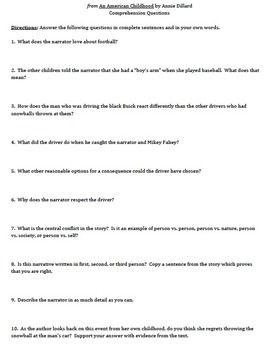

Dillard starts off the prologue with a backstory that includes Benjamin Franklin having “already invented his stove in Philadelphia by 1753 and Thomas Jefferson was a schoolboy in Virginia.” In another part, the author writes, “In 1753, young George Washington surveyed the land for the English this point of land where rivers met.” Dillard then takes these allusions as scenery for the exposition of the 1950’s period where she grew up and explored. All of these memories continue to be important for Dillard because in each of them she can recall becoming more alert and aware of her own psyche and environment, aiding her development as an artist.Īnnie Dillard’s memoir, An American Childhood, is filled and adorned with references to innumerable literary and 1950’s pop culture sources. The reader is exposed to many other anecdotes such as her being chased by a driver, her time spent in a lakehouse on Lake Erie, and the time she crashed a car at a drag race. This event teaches Dillard that her imagination is a tool under her command which she can manipulate and command to create a world beyond the one she was living in. For example, the reader learns of Dillard’s experience with a fictional monster in her room that was, in reality, a shadow cast by light from a passing car.

These anecdotes are not presented as a day to day account of Dillard’s childhood, but rather have an impressionistic edge to them, with each anecdote playing an important role in the development of the characters and storyline. An American Childhood lacks a solid, continuous plot, and is presented as a series of anecdotes.


 0 kommentar(er)
0 kommentar(er)
